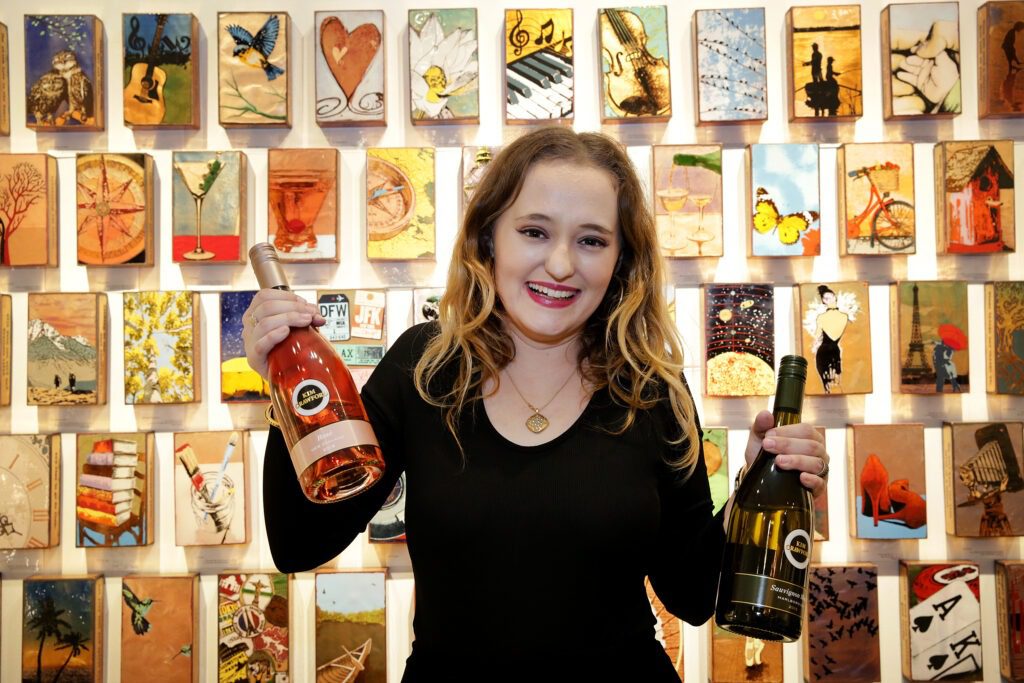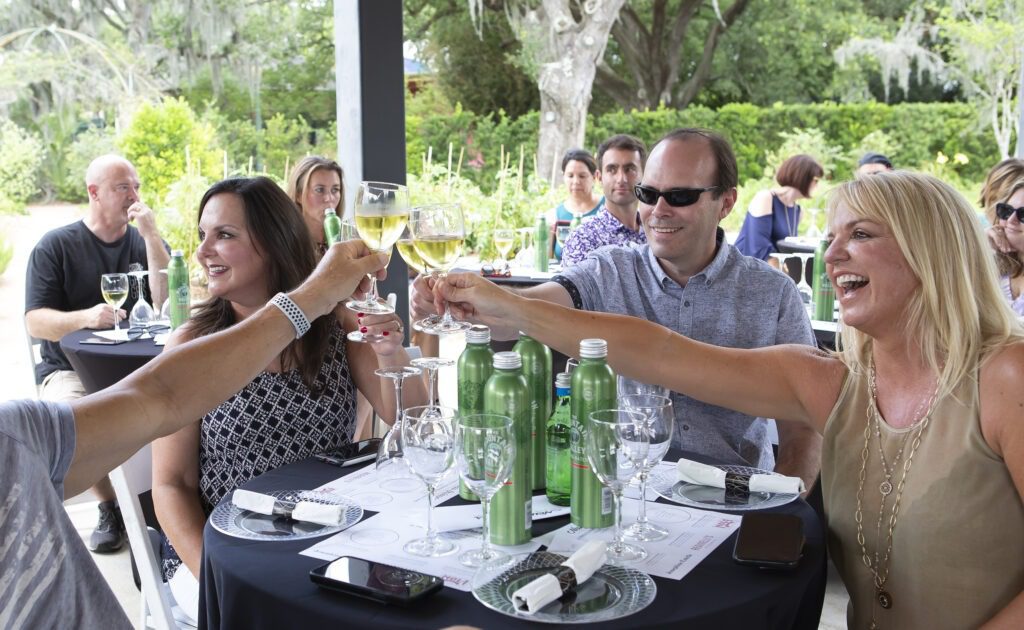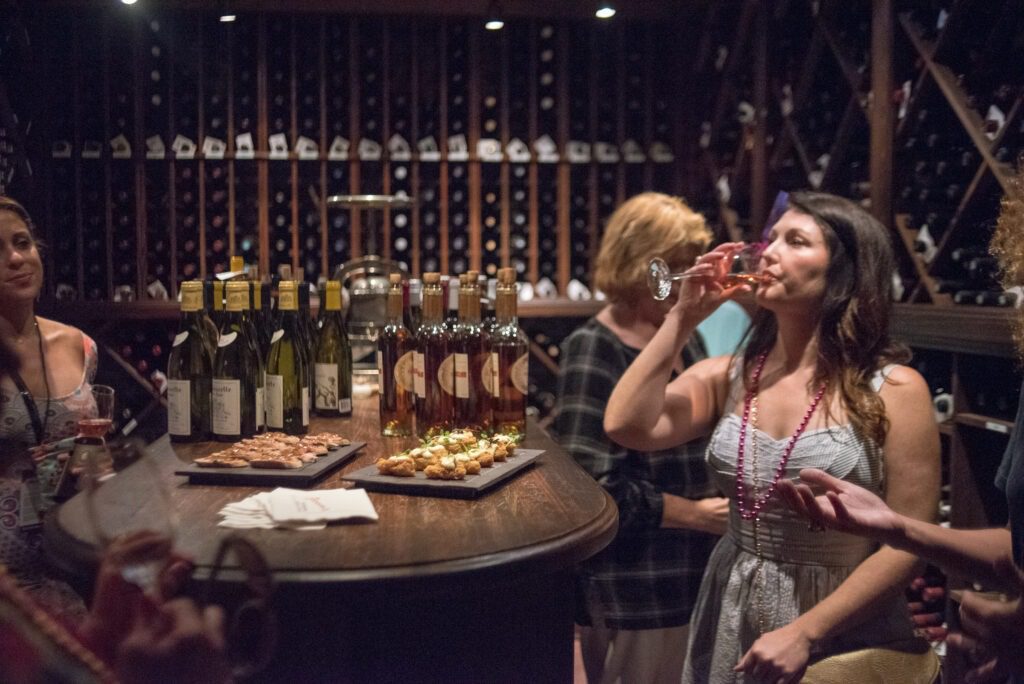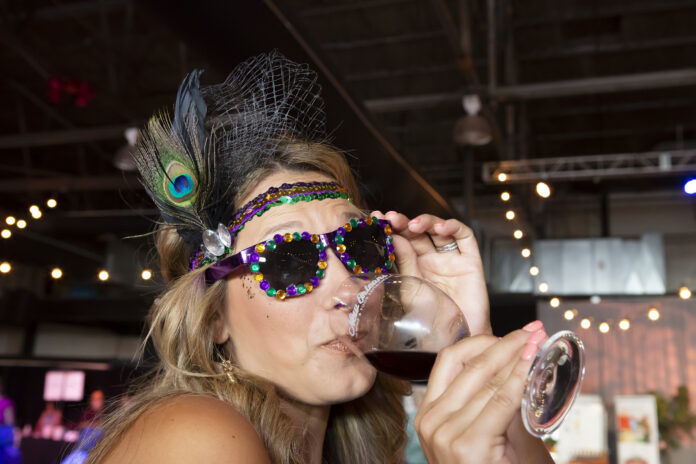The New Orleans Wine & Food Experience 2023 runs June 7 – 11 Uncorks Grand Plan and New Venue
The New Orleans Wine & Food Experience announces that a limited number of exclusive ticket packages and all individual event tickets are now on sale for the five-day event set for June 7 – 11.

“This year, we have enhanced our three big events—
Vinola, Tournament of Rosés, and our Grand Tasting…
making them bigger and better than ever before and moving them to new venues,” said Aimee Brown, NOWFE Executive Director.
“In response to high demand, we have added special ticket packages for those attendees looking to spend a few days with us.

And, for the many locals that love to attend our events, we offer the individual ticket option to fit personal schedules and lifestyles.”
Vinola at the The New Orleans Wine & Food Experience
Vinola, the highest-level tasting event NOWFE offers, kicks off at the historic Orpheum Theater on Thursday, June 8, at 6 pm.
Foodies and oenophiles of all experience levels will sample rare and highly valued wines expertly paired with delectable foods crafted by local chefs. Winemakers will present elite wines from around the world, and award-winning chefs will serve and talk about their food and what inspires them in its creation. Guests will have the chance to have one-on-one conversations with winemakers and chefs. Tickets are $215 each. VIP tickets are $280 and include 30-minute early entry and VIP lounge access.
Tournament of Rosés
Back for the fifth year, the Tournament of Rosés is moving to The Fillmore on Friday, June 9th, at 7:00 PM. Tickets to this special event are $129 per person.

The Tournament of Rosés offers guests a unique opportunity to taste premier rosés, both still and sparkling, from France, Spain, Italy, the United States, and the Southern Hemisphere, and then cast a vote for a favorite.
Best of Show, Gold, Silver, Bronze and the People’s Choice Award will be announced.
New this year, a specialty sparkling sector featuring bubbles beyond the Rosé realm and a spirited cocktail garden. Tasty bites will accompany each wine served. Guests are encouraged to come “dressed to impress” with a touch of pink. VIPs gain 30 minutes of early access to this event.
Grand Tasting at the The New Orleans Wine & Food Experience
Also, new this year, NOWFE will host one Grand Tasting on Saturday, June 10, from 3 – 6 pm at Generations Hall. General Admission tickets are $149 before event week when they increase to $169. The Grand Tasting VIP a la carte price is $215 per person and includes early admission at 2:30 pm and access to a VIP lounge. The Grand Tasting at NOWFE showcases wines from around the world and food served by New Orleans’ finest chefs.
NOWFE once again closes its 5-day event with Burlesque, Bubbly & Brunch on Sunday, June 11, from 11 am – 1 pm at the Omni Royal Orleans. Tickets to this titillating event are $95 each.

Join Trixie Minx and her Burlesque Beauties for a one-of-a-kind NOWFE experience with a plated brunch prepared by the chefs at the Omni Royal Orleans, bottomless sparkling wine by Luc Belair, and a burlesque performance you are sure to remember.

In addition to the special events, NOWFE presents its Labs and Experiences on Friday and Saturday. Five Labs will occur each day at the New Orleans Culinary & Hospitality Institute at various times, while five boutique Experiences will occur over the two days throughout the city. Ticket prices vary for the Labs and Experiences.
The three levels of event ticket packages available this year are:
The Tasting Package — $258 per person
This package gives a “taste” of the main events this season. It includes entrance to:
· Tournament of Rosés
· The Grand Tasting
The Connoisseur Package — $793 per person
This package is for the wine and food enthusiast looking to be a part of the entire NOWFE experience. It includes 30 minutes of early entry and the following:
· Vinola
· Tournament of Rosés
· The Grand Tasting
· Choice of four (4) Labs
· 10% Discount on Additional Labs
· $20 Voucher to Use at NOWFE Merchandise Store
The VIP Package — $1000 per person
Upgrade to the VIP Package! This ticket allows you to experience the event at the highest level. It includes 30 minutes of early entry, access to VIP areas, and the following:
· Vinola
· Tournament of Rosés (early entry)
· The Grand Tasting (VIP)
· Choice of five (5) Labs (with priority seating)
· 10% Discount on Additional Labs
· $20 Voucher to Use at NOWFE Merchandise Store
For more information or to purchase additional tickets, visit nowfe.com.



